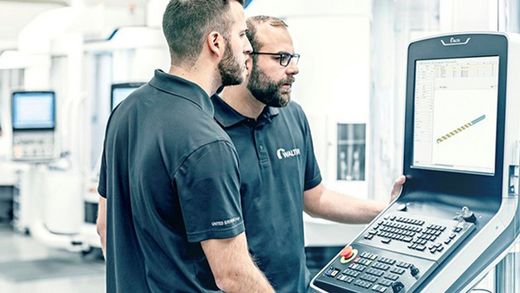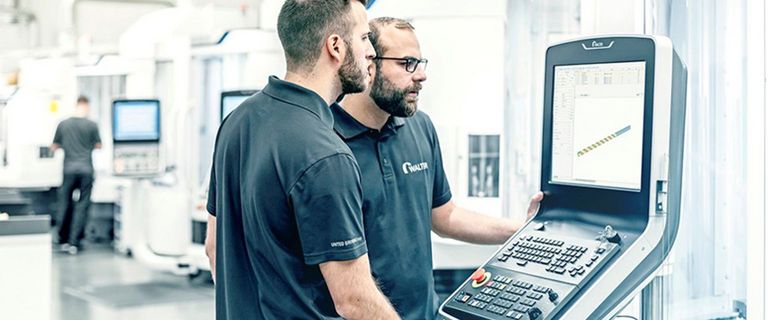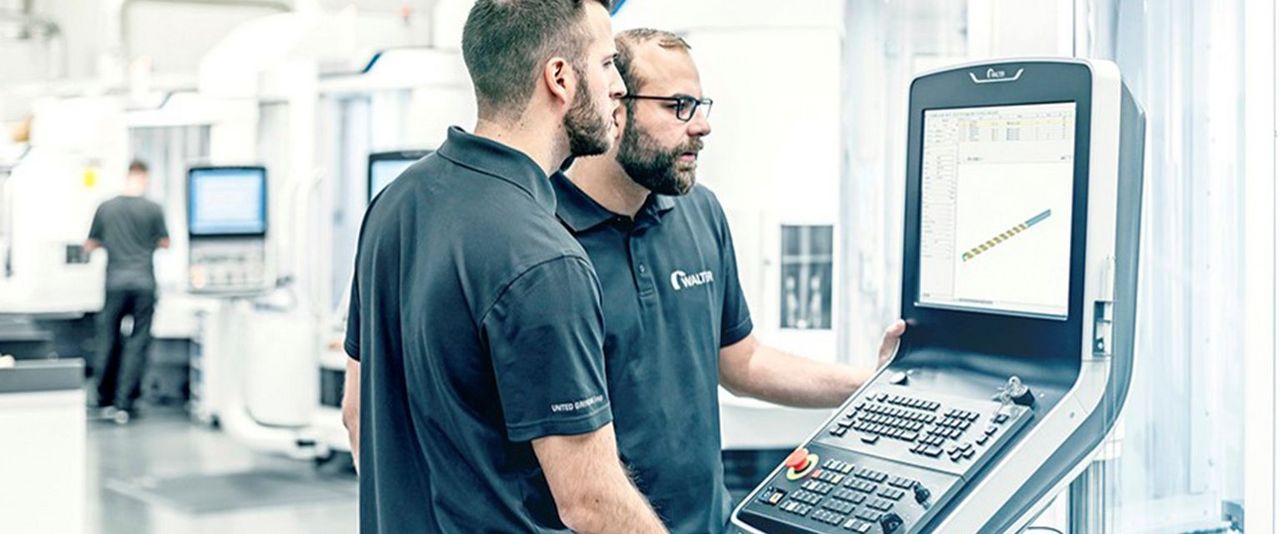5 Things Shops Can Do to Close the Manufacturing Skills Gap
The National Association of Manufacturers, based on a Manufacturing Institute and Deloitte study, estimates that by 2028 manufacturers will need to fill 4.6 million jobs. Many of those vacancies will be created by skilled workers who are aging out.
That sounds like a daunting task to sustain production levels, let alone grow the sector. But there are many things manufacturers can be doing now to help address the manufacturing skills gap and make the best use of their people. Here are five:
- Invest in automation.
- Acquire more user-friendly machines.
- Train to upscale workers in place.
- Lean on OEMs and data collection instead of your staff to improve uptime and the lifespan of equipment.
- Reconsider apprenticeships to grow the workforce pipeline and increase retention.
Automation Brings Many Workforce-Related Benefits
A simple but accurate snapshot of an initial foray into machine tool automation is a single employee that previously operated one machine now is responsible for an automated system of multiple machines, overseeing setup, operation and changeovers.
Automation delivers process innovation, increased uptime, better quality through repeatable precision, and improved throughput. It also creates a cascading series of workforce-related benefits from covering meal breaks to extending production runs beyond eight hours to the potential for lights-out production.
Among the other benefits of machine tool automation from a manufacturing skills gap perspective:
- It mitigates risk as experienced skilled workers age out.
- Staff no longer perform many repetitive and sometimes dangerous tasks,
- Automation frees existing workers for cross training or to upscale to more high-value tasks, which helps employee retention.
- Automation-based job roles are higher paying and more attractive to technology-minded young people.
Acquire More User-Friendly Machines to Get the Most Out of Human Capital
One of the things that has challenged manufacturers for years is how to transfer CNC programming knowledge to their increasingly younger and newer staff. The good news is that the evolution of software and Human Machine Interfaces (HMIs) has drastically changed that dynamic, allowing manufacturers to train their newest employees how to program and monitor their most sophisticated machines.
The user-friendly HMIs free up valuable skilled workers to be deployed elsewhere, improve workforce retention and help address the manufacturing skills gap. Among the benefits of user-friendly HMIs and machines:
- OEMs are building technical expertise into the machine itself, as opposed to relying on tribal knowledge being passed on through the shop for CNC programming, diagnostics, troubleshooting, and changeovers.
- Tool scanning and measuring allows operators to compare a 3D scan of a tool or workpiece to a target model from the customer’s CAD/CAM system.
- Tool simulation capabilities enable operators to test programs confidently. The software produces a dynamic of “what you see is what you grind.”
Most first-generation HMIs used for CNC programming are operationally complex, designed with an expert operator in mind. HMI design is becoming more friendly to younger employees with touch screen capabilities, simulating or directing an action and swiping motions to advance through steps and displays. The next generation of HMIs and operating systems will know the level of expertise of each operator and limit the HMI parameters in which he or she operates. Features could be unique to a user or user-machine combination.
Invest in Training Within Industry to Upscale Workers Already in Place
Closing the manufacturing skills gap means more than transferring the key “tribal knowledge” that often isn’t documented anywhere — the tips, tricks or knacks that are so critical for doing a task correctly. It also means meeting the demand for knowledge-based workers and increasing retention as the rate of technology adoption increases.
The need for proficiency in training will also increase because:
- The need to upscale technicians from operating machines to programming HMIs, which allows them to oversee a production cell.
- Career development is a priority for younger employees who can see themselves growing in technology-centric roles.
- It won’t be long before manufacturers will have the need for data scientists for machine learning, artificial intelligence, virtual reality and augmented reality. They will be wise to figure out how to grow their own.
Among the ways to address training at your manufacturing facility:
- Invest in the coaching and training from OEMs. Their expert application engineers will bring a consultative approach to your shop floor to train employees in the machines, software and operations they use every day.
- Work with a local workforce development consultant to develop a “train the trainer” approach. That moves the burden of training from team leaders to the staff, which creates more of a knowledge-sharing culture and repeatable process. Tribal knowledge becomes more communal as opposed to the domain of a specific veteran operator.
Lean on OEMs for Digital Monitoring and Preventive Maintenance
Another way to address the manufacturing skills gap is to lean on OEMs for business solutions such as digital monitoring and preventive maintenance. Operators are employed primarily to program, run and monitor machines, not fix them. The use of remote service is increasing and will become more common as on-site maintenance staff retires.
Advances in data collection already have manufacturers focusing more on programming skills than mechanical skills. The data collection and access to monitoring also make the case for preventive maintenance and its long-term ROI for productivity and extending machine life.
Machine learning and artificial intelligence will have powerful implications for manufacturers, beginning with predictive maintenance that will reduce downtime, streamline repairs and parts inventory and lead to better forecasting. Eventually, data science skills will far outweigh the need for machinists as more manufacturers learn to run lights-out.
Re-Consider Apprenticeships to Grow Pipeline, Increase Retention
Apprenticeship programs traditionally have been a win-win for manufacturers and employees, with apprentices having higher retention rates as they develop skills and achieve technical credentials while earning on average about $300,000 more in career earnings.
Apprenticeships have been occupational in nature, so some manufacturers have been hesitant to invest in workers that have more mobility and may change jobs; likewise many workers have not wanted to commit to a specific line of work. It also has been a challenge to get staff members to commit to one to four years of part-time classroom work at a tech school in addition to their full-time job and other lifestyle barriers.
However, workforce development agencies and other manufacturing stakeholders are modernizing apprenticeships with competency-based, on-demand e-learning that can be done whenever it is convenient for the apprentice. It may be time to reconsider apprenticeship programs that have a more condensed time frame and much-needed flexibility.
UNITED GRINDING GROUP Service Technicians receive special training in their international service academies to help them become grinding specialists. In total, it is more than 6% of the workforce.
The Right Partner Can Help You Close the Manufacturing Skills Gap
The manufacturing skills gap is forcing companies to get the most out of their existing resources, whether it machines, maintenance, ERPs or operators. UNITED GRINDING’s experience and expertise can help you find the right machines, applications, digital monitoring and maintenance and training. Contact us today to discuss how we can collaborate to solve your challenges and get the most out of your people and technology.









